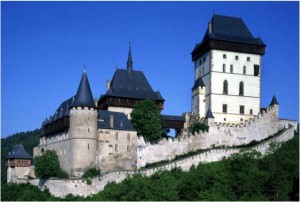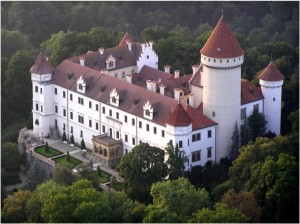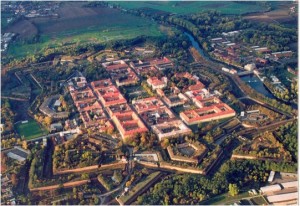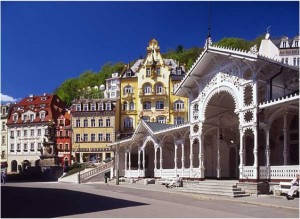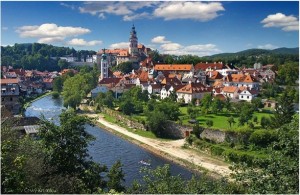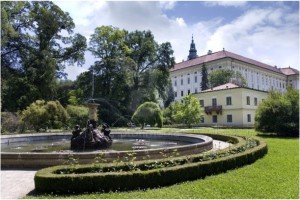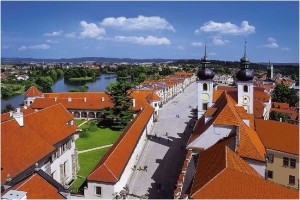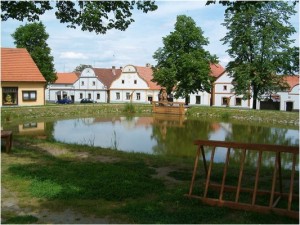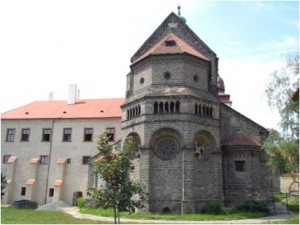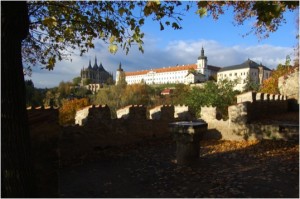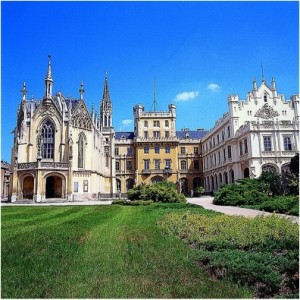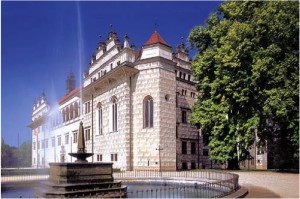 |
|
|||||
|
||||||
Places to visit... |
Czech RepublicKarlštejn Karlštejn was built in the 14th century by Charles IV as a stronghold to protect the Royal Jewels. A major reconstruction took place in the 19th century and gave the castle its present look. Karlštejn’s beautiful exterior is one of the most visited of all the Czech castles and makes for a fabulous day trip out of Prague. Konopiště Originally built as an early Gothic castle of the French type, re-modeled in the Renaissance style and then rebuilt into a Baroque chateau. The Chateau was refurbished at the end of the 19th century in the Romantic style for Franz Ferdinand de Este, successor to the Habsburg throne. You will be able to see fine examples of this period from, chateau collections of armory, library, chapel, etc) to State rooms and private rooms belonging to F. F.dEste, a gallery, St. George museum and a shooting gallery. There are also beautiful gardens set in an extensive English style park. Terezín Terezín was built in the 18th century by Emperor Joseph II and named Theresienstadt for his mother Marie Therese. Sadly Terezín became a prison and holding camp for some 160,000 Jews on their way to concentration camps during the Nazi occupation of Czechoslovakia in WWII. Today Terezín has been kept as a reminder of those dark days and you can visit, experience and remember. Karlovy Vary The world famous spa town of Karlovy Vary, also known by its German name of Karlsbad, was founded around 1350 by the Czech King and Roman Emperor, Charles IV. The town’s visitors over the years have included Casanova, Ludwig van Beethoven, Wolfgang Amadeus Mozart, Franz Kafka, Alphonse Mucha and many representatives of the world film industry who come to Karlovy Vary home of the Czech Republics International Film Festival held every year in July. Whether you go there for holiday, to relax your mind and body or enjoy the architecture, you will not regret visiting this fascinating town. Český Krumlov Situated on the banks of the Vltava river, the town was built around a 13th-century castle with Gothic, Renaissance and Baroque elements. It is an outstanding example of a small central European medieval town whose architectural heritage has remained intact thanks to its peaceful evolution over more than five centuries. Zámek v Kroměříži (Castle at Kromeriz) Kroměříž stands on the site of an earlier fort across from the River Morava, at the foot of the Chriby mountain range which dominates the central part of Moravia. The castle and gardens of Kroměříž are are a well preserved example of a European Baroque Royal residence. The gardens and landscape being created throughout the 17th and 18th centuries. Historické centrum Telče (Historic center of Telc) The houses of Telč, which stand on a hilltop, were originally built of wood. After a great fire in the late 14th century, the town was rebuilt in stone, surrounded by walls and further strengthened by a network of artificial ponds. The town’s Gothic castle was reconstructed in High Gothic style in the late 15th century. Historická vesnice Holašovice (Holasovice Historical Village) Holašovice is an oustanding example, and preserved, traditional central European village. It has a large number of 18th and 19th century buildings, built in a style known as ‘South Bohemian folk Baroque’ and preserves a ground plan dating from the Middle Ages. Židovská čtvrť a bazilika svatého Prokopa v Třebíči The Jewish Quarter, the old Jewish cemetery and the Basilica of St Procopius in Třebič are reminders of Jewish and Christian cultures co-existence through the Middle Ages to the 20th century. The Jewish Quarter is a living testimony to the different aspects of life in this community. St Procopius Basilica, built as part of the Benedictine monastery in the early 13th century, is a remarkable example of the influence of Western European architecture in this region. Kutná Hora Kutná Hora developed as a result of the exploitation of the silver mines. In the 14th century it became a royal city endowed with monuments that symbolized its prosperity. The Church of St Barbara, a jewel of the late Gothic period, and the Cathedral of Our Lady at Sedlec, which was restored in line with the Baroque taste of the early 18th century, were to influence the architecture of central Europe. These masterpieces today form part of a well-preserved medieval urban fabric with some particularly fine private dwellings. Lednicko-valtický (Lednice – Valtice Cultural Landscape) Between the 17th and 20th centuries, the ruling Dukes of Liechtenstein transformed their domains in Southern Moravia into a striking landscapes. It brought Baroque architecture, mainly the work of Johann Bernhard and Fischer von Erlach’s classical and neo – Gothic style of the castles of Lednice and Valtice together with countryside fashioned according to English landscape architecture at that time. At 200 sq km, it is one of the largest artificial landscapes in Europe. Zámek Litomyšl (Litomysl Castle) Litomyšl Castle was originally a Renaissance castle of the style first developed in Italy and then adopted and developed in central Europe in the 16th century. Its decoration and design are oustanding and a fine example, including the later High-Baroque features added in the 18th century. It preserves the range of ancillary buildings associated with an aristocratic residence of this type and in the former brewery Bedřich Smetana was born. |
|||||
|
||||||
|
|






